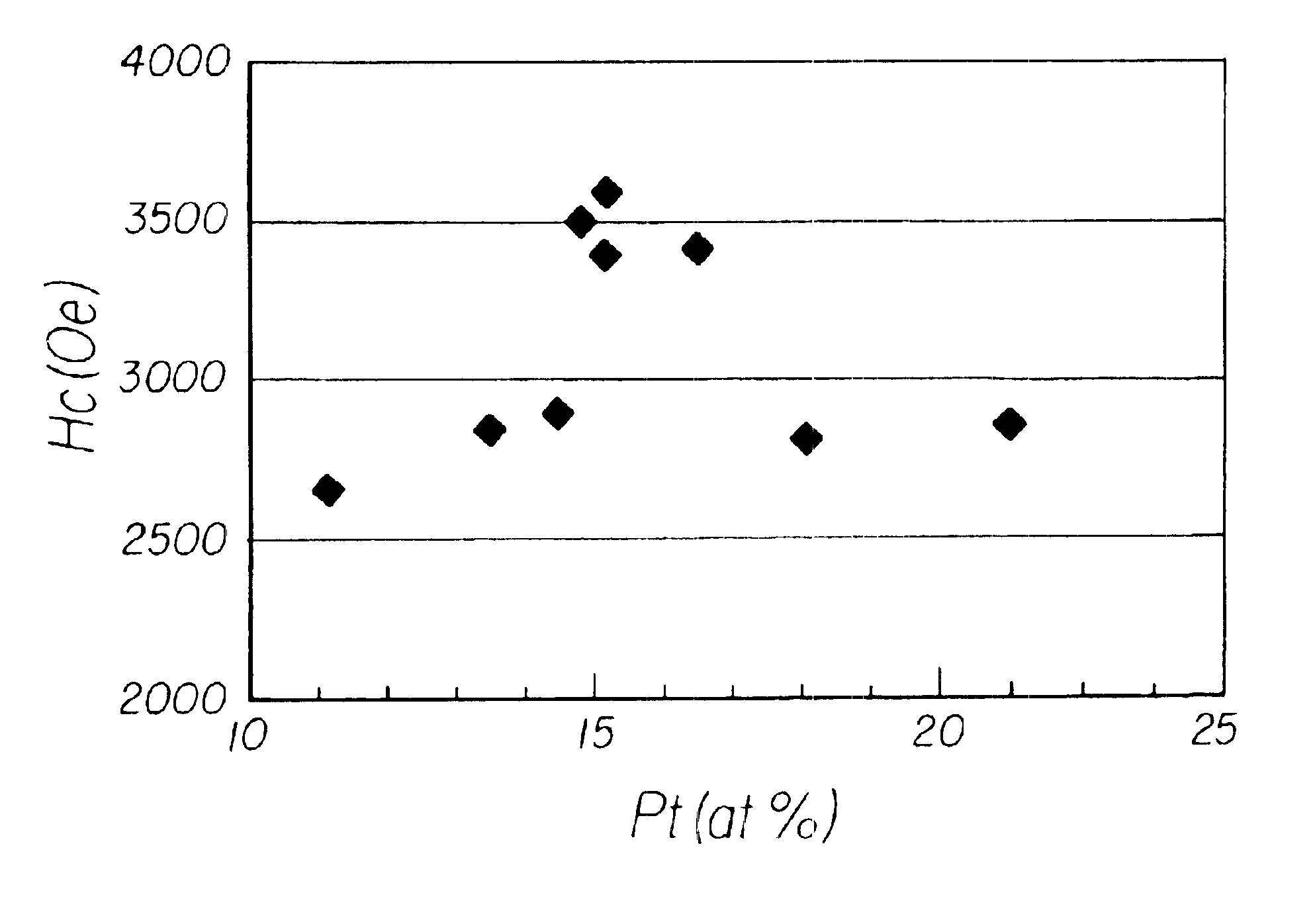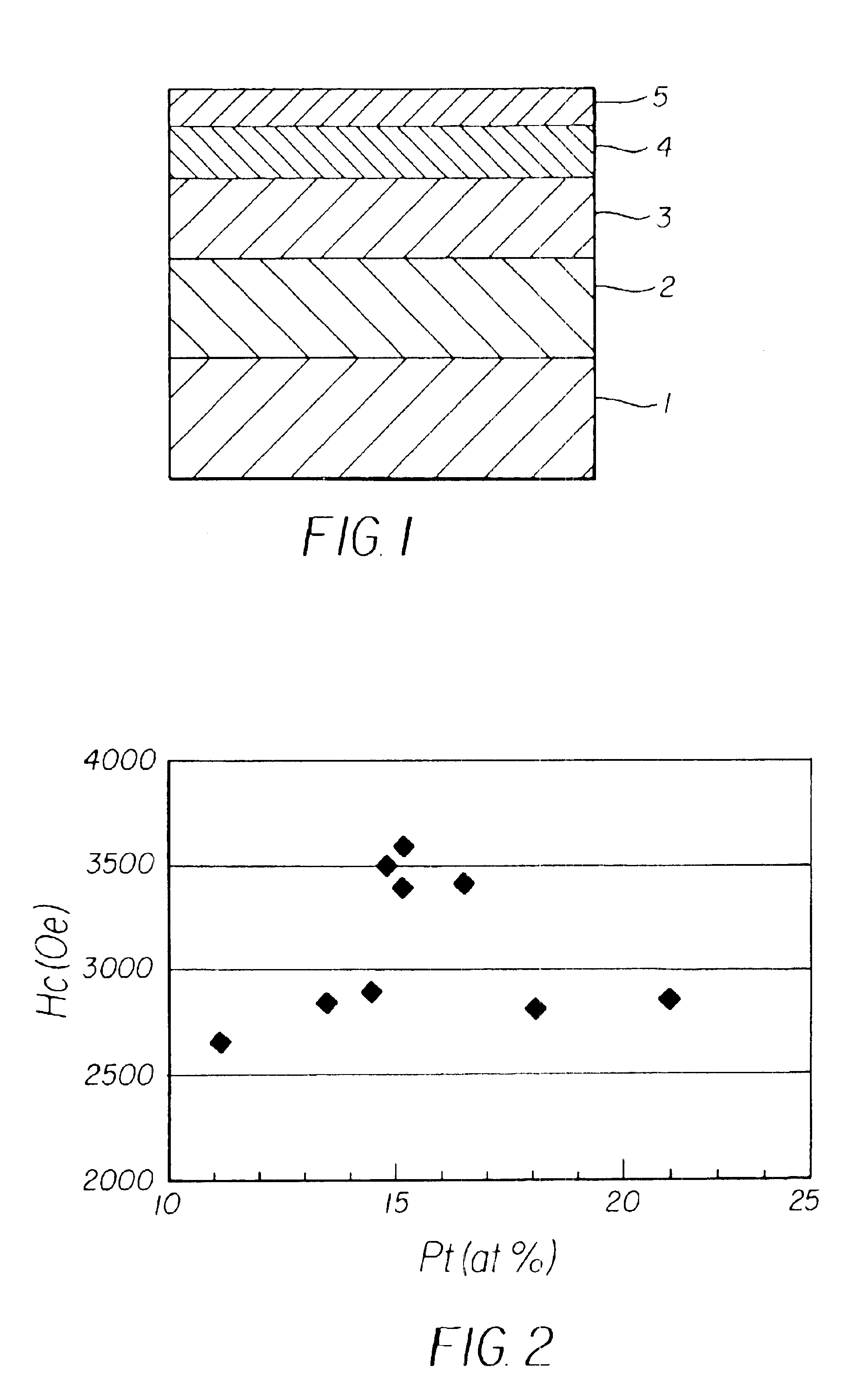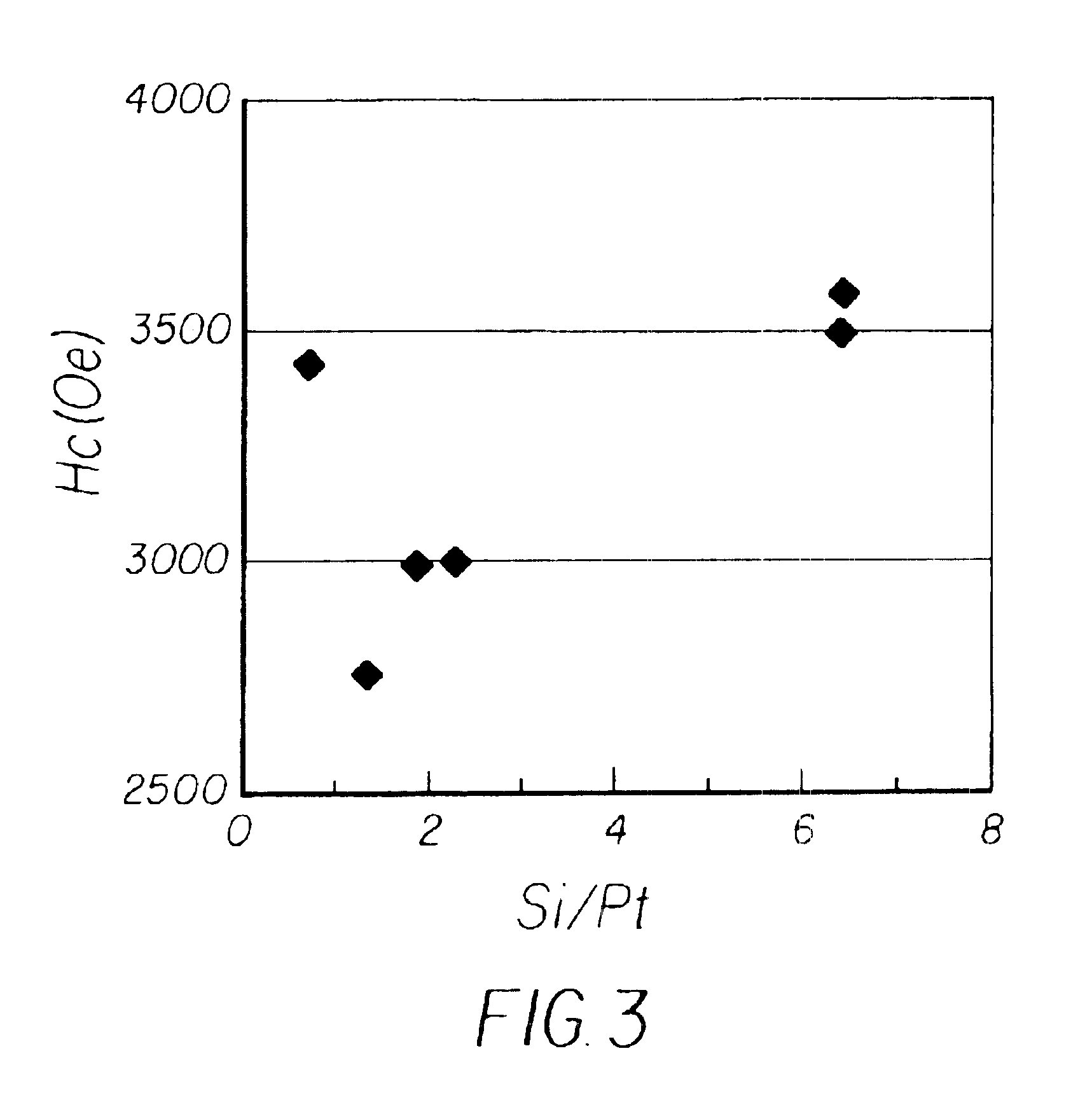Magnetic recording medium and method for manufacturing the same
a technology of magnetic recording medium and manufacturing method, which is applied in the field of magnetic recording medium, can solve the problems of deterioration of magnetic characteristics, target cannot necessarily achieve its full ability, and guideline has not been elucidated, so as to reduce reliability, hinder recording performance, and reduce the effect of granular structur
- Summary
- Abstract
- Description
- Claims
- Application Information
AI Technical Summary
Benefits of technology
Problems solved by technology
Method used
Image
Examples
example 1
[0040]A disk shape substrate with 3.5 inch diameter made by injection molding polycarbonate resin was used for a nonmagnetic substrate. After cleaning, the substrate was introduced into a sputtering apparatus, and a ruthenium underlayer 30 nm thick was formed under an argon gas atmosphere of 30 mTorr. Subsequently, a granular magnetic layer 15 nm thick was formed by means of an RF sputtering method using a target of Co88-XCr12PtX containing 10 mol % of SiO2 under an argon gas atmosphere of 15 mTorr. The granular magnetic layers were deposited under the same conditions except that various targets were used containing platinum in proportion x from 10 to 25. After depositing a carbon protective layer 10 nm thick on each of the granular magnetic layers, the resulted article was taken out from the vacuum chamber. After that, liquid lubricant was applied to the thickness of 1.5 nm to produce a magnetic recording medium. Substrate heating prior to the deposition was not conducted.
[0041]The...
example 2
[0042]A plurality of magnetic recording medium was produced in the same manner as in Example 1 except that a granular magnetic layer was deposited using a target of Co76Cr12Pt12 containing 10 mol % of SiO2 under deposition conditions different from each other to control the platinum content being in the range of 15 at % to 17 at %. Composition of the grain boundary region in the granular magnetic layer of each of the obtained magnetic recording media was analyzed by means of EDS. FIG. 3 is a graph showing a relation between Si / Pt atomic ratio in the grain boundary region and the coercive force Hc of a magnetic recording medium. The graph of FIG. 3 shows a tendency of the Hc values in a low level when the Si / Pt atomic ratio is lower than 3, and high coercive force of about 3,500 [Oe] is achieved when the Si / Pt atomic ratio is larger than 6.
[0043]However, the coercive force Hc can be occasionally high even if the Si / Pt atomic ratio is low. Accordingly, the effect of the Si / Pt atomic r...
example 3
[0046]Two recording media were produced in the same manner as in Example 1 except that each granular magnetic layer was formed by means of an RF sputtering method using a target of Co82Cr6Pt12 containing 6 mol % of SiO2 and 2 mol % of Cr2O3 under an argon gas atmosphere of 40 mTorr for the sample 3-1 or 15 mTorr for the sample 3-2.
[0047]Quantity of platinum in the ferromagnetic crystal grains in the granular magnetic layer of each of the obtained magnetic recording media was measured by means of EDS. The measured values of platinum content were 13 at % for the sample 3-1 and 16 at % for the sample 3-2. An Si / Pt atomic ratio in the grain boundary region of each sample was determined from composition analysis for the grain boundary region by means of EDS. Signal to noise ratio (SNR) was also measured for each sample at writing and reading density of 300 kFCI. The SNR was measured using a spinning stand tester. Writing and reading for the magnetic recording medium was done using the sa...
PUM
| Property | Measurement | Unit |
|---|---|---|
| pressure | aaaaa | aaaaa |
| diameter | aaaaa | aaaaa |
| thickness | aaaaa | aaaaa |
Abstract
Description
Claims
Application Information
 Login to View More
Login to View More - R&D
- Intellectual Property
- Life Sciences
- Materials
- Tech Scout
- Unparalleled Data Quality
- Higher Quality Content
- 60% Fewer Hallucinations
Browse by: Latest US Patents, China's latest patents, Technical Efficacy Thesaurus, Application Domain, Technology Topic, Popular Technical Reports.
© 2025 PatSnap. All rights reserved.Legal|Privacy policy|Modern Slavery Act Transparency Statement|Sitemap|About US| Contact US: help@patsnap.com



